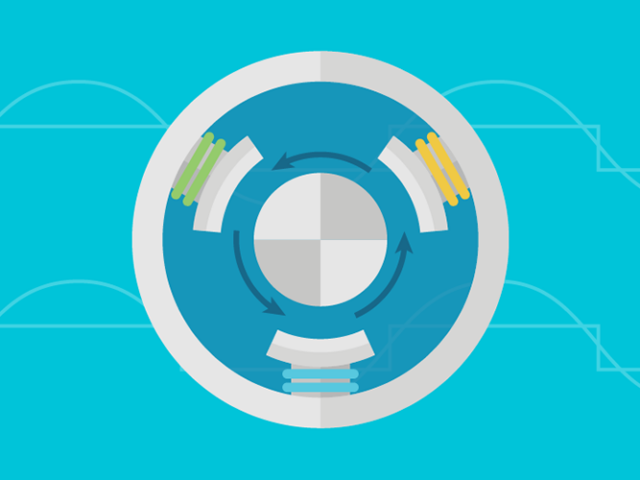In 2022, Swedish researcher Almira Osmanovic Thunström instructed the GPT-3 algorithm to follow a simple directive — “Write an academic thesis in 500 words about GPT-3 and add scientific references and citations.” The artificially intelligent text generator eventually wrote a paper that is now being peer-reviewed. While this experiment is a rarity to show the potential of AI, this technology is already transforming other areas of scientific research. Here Dr. Dror Kolodkin-Gal, founder of automated image integrity software Proofig, explores how.

The development of AI has led to developments in a wealth of applications, from autonomous vehicles to virtual assistants. In scientific research and publishing, it is no different. While AI writing an entire paper is an initial experiment, developments in the technology can help researchers, editors and publishers in the life sciences improve not only their chances of being published but also can increase the integrity of their work and enable the publications to have a real impact for long.
AI for writing
Academics often write manuscripts with the aim of getting them published in a prestigious journal and increasing their recognition. This can be a competitive process, with publishers reporting that they receive millions of papers per year — Elsevier receives around 2.6 million papers each year. Editorial teams will carefully review these papers, choosing to publish the most credible, influential research that is also well-written.
When developing manuscripts to outline the findings of their research, authors are not only required to write the paper but to also proofread, amend and check it for issues such as plagiarism. This can be a time-consuming process for any researcher and is particularly difficult for those who are not writing in their native language.
Many people use spelling and grammar-checking software so they can detect and resolve mistakes during the writing and proofreading process. AI-based grammar tools have advanced significantly to do more than spot spelling mistakes. These tools can now employ advanced algorithms to ensure writers use terms in the correct context, check for tone and provide suggestions on where researchers can make improvements. Authors can also invest in tools developed particularly for the industry to ensure any changes they make are technically and scientifically accurate.
AI for images
Scientific images are a powerful means of communicating scientific results. Microscopy images, western blots and other forms of scientific images can demonstrate a variety of data points quickly and effectively.
During their experiments, researchers will capture thousands of images before selecting the representing ones for their paper. Keeping track of these images can be difficult, both when taking the pictures and storing them. Accidentally overlapping when taking images from a magnified slide or unintentionally labelling an image means that researchers could inadvertently include image duplications in their paper. It can be difficult to see these duplications by eye but, if they are submitted, the paper could be rejected or even retracted after publication.
A paper could include hundreds of sub-images, so checking all of these manually before submission will be a time-consuming and difficult task with no guarantee that the reader will find all the issues. To complete the process more quickly and efficiently, researchers can use AI tools that detect and compare all the sub-images in a paper. Automated image integrity software Proofig, for example, uses computer vision to scan a manuscript and compare all images in minutes, flagging any potential image duplications. Researchers can then review the report and amend it before sending it to a journal.
The review process
As previously mentioned, publishing houses receive millions of manuscripts each year, but they can only publish a small portion of these. This can make peer review a time-consuming process for editors and publishers, as they must carefully check the importance of research and any data included as well as the accuracy of written content and images.
AI tools enable editors to quickly check over these papers so that they can spend more time on the most credible manuscripts. Editors can run all submitted papers through intelligent plagiarism-checking tools to ensure that all content is original, avoiding the risk of including copied content. Automated keyword identification or summarising tools could also help editors quickly understand the topic of each paper and focus on the content that is of most interest to the journal.
While researchers can use AI tools to check for mistakes pre-publication, editors and publishers can use similar tools during submission or post-publication to detect errors. By scanning submitted papers with spell-checking tools and automated image integrity software, editors can quickly run through the papers and return any manuscripts with mistakes back to the editor to resolve before it is published. Alternatively, if another researcher detects and reports an issue post-publication, editors can use AI tools during the investigation. For example, if someone reports an issue with an image, editors can scan the entire paper using image integrity software such as Proofig to compare all images quickly and find any signs of image issues. The editor can then concentrate on flagged issues, making an educated decision on whether there is an error and whether to resolve it or retract the piece.
While the GPT-3 algorithm did write a paper on its own, most AI tools are not developed to replace researchers and editors, but to help them — we will always need human intervention in scientific research. Academic publishing is a competitive field, so researchers must consider how they can increase their chances of publication without mistakes/ with the highest standards of quality & integrity while publishing houses want to publish the best content to maintain their reputation. By investing in AI tools to check writing, imagery and more, everyone in the scientific research industry can ensure they are sharing their best work.




